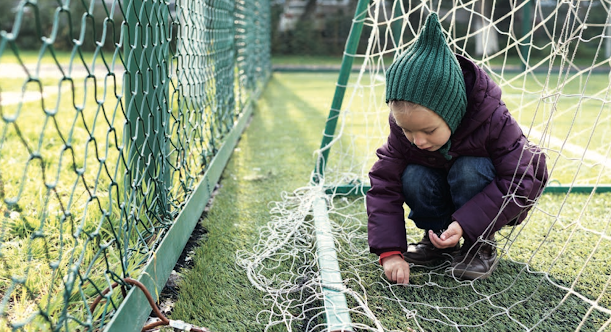LGUSD dodged a bullet by ruling out crumb rubber infill for proposed artificial turf early on
There are a host of concerns with artificial turf systems that are filled with (those annoying black) crumbs from recycled rubber tires. Early in the planning stages of landscape design, LGUSD wisely ruled out crumb rubber as a possible infill choice.
Perhaps we have LGUSD's landscape architect, Verde Design, to thank for this. Verde Design's architect referred to the crumb rubber infill as carcinogenic at the 11/18/21 LGUSD board meeting. (Curiously though, crumb rubber appears to be what is in installed at Los Gatos High School fields, projects Verde Design had a hand in.)
👏👏👏
While LGUSD appears to have dodged this bullet, issues with crumb rubber infill should be considered when the fields at Creekside and LGHS come due for renovation.
And if your child currently uses fields at Creekside or LGHS regularly, proceed with caution. Watch this and then read on...
In February 2016, the Federal Research Action Plan on Recycled Tire Crumb Used on Playing Fields and Playgrounds was announced. This is a multi-agency effort that includes the U.S. Environmental Protection Agency (EPA), Centers for Disease Control and Prevention (CDC), and the U.S. Consumer Product Safety Commission (CPSC) performing research that seeks to improve the understanding of potential health effects of recreational exposures to recycled tires.
Because the EPA has not yet completed a risk assessment on exposure to tire crumb rubber on synthetic turf fields, it can not yet identify a level above which health effects could occur. As Bob Cook reports in Forbes, "you still have to wait if you want a definitive look on whether a surface made partly of recycled tires is safe for your children." While the EPA has found a limited level of exposure to chemical substances in the fields, its 2019 report "emphasizes that there is no determination of whether that limited exposure has any toxic effects."
In parallel, California's Office of Environmental Health Hazard Assessment is conducting its own studies on potential negative human health effects associated with the use of recycled waste tires in playground and synthetic turf products. This research is also not yet complete.
An earlier study by the state of California was acknowledged as flawed by a lead scientist involved in the study.
At least until research is completed, serious concern will remain.
Environment & Human Health, Inc. has analyzed the studies the industry uses to justify safety claims and recommends schools do not install plastic synthetic turf fields. It's clear synthetic turf industry's reports of safety are an inadequate basis for decision making.
Until more is known, CPSC recommends the following precautions to limit exposure:
- "Avoid mouth contact with playground surfacing materials, including mouthing, chewing, or swallowing playground rubber. This may pose a choking hazard, regardless of chemical exposure.
- Avoid eating food or drinking beverages while directly on playground surfaces, and wash hands before handling food.
- Limit the time at a playground on extremely hot days.
- Clean hands and other areas of exposed skin after visiting the playground, and consider changing clothes if evidence of tire materials (e.g., black marks or dust) is visible on fabrics.
- Clean any toys that were used on a playground after the visit."
The Children’s Environmental Health Center of the Icahn School of Medicine at Mount Sinai goes further and has published the following position statement: "Based upon the presence of known toxic substances in tire rubber and the lack of comprehensive safety studies," it "urges a moratorium on the use artificial turf generated from recycled rubber tires." It's also published an artificial turf consumer guide and this easy-to-read infographic.
